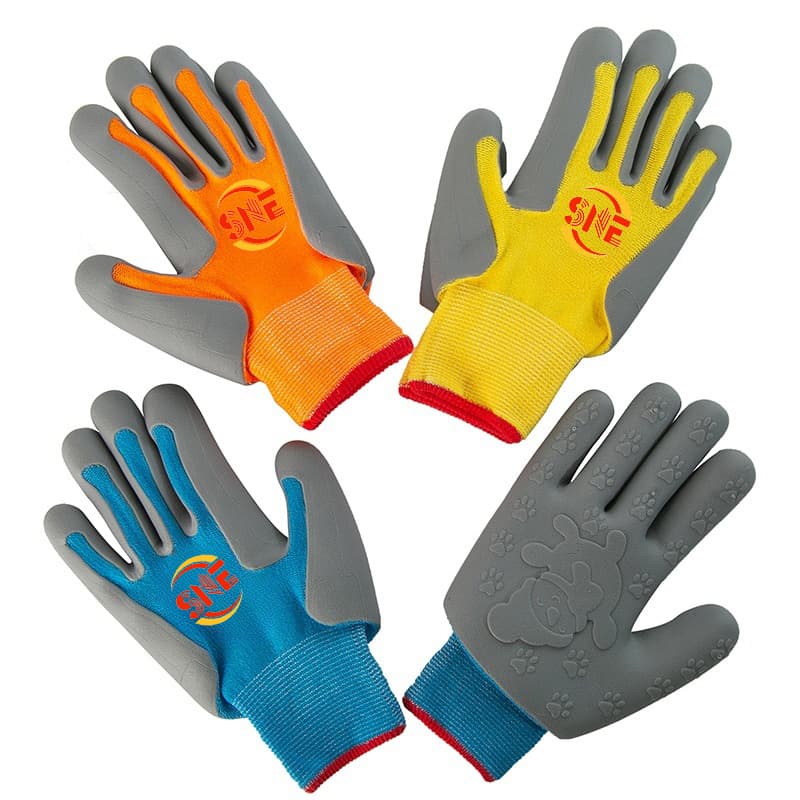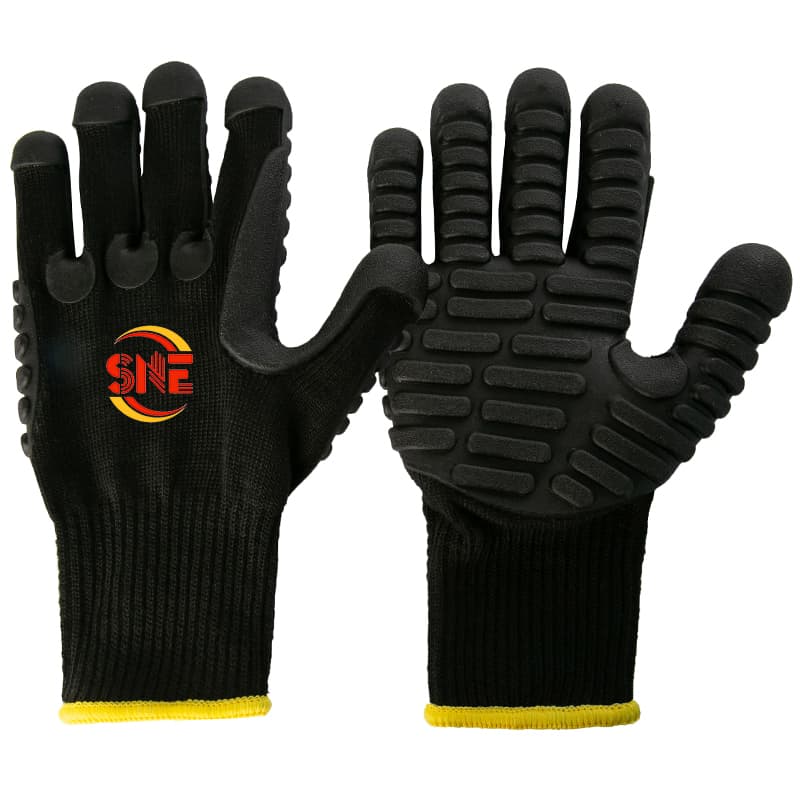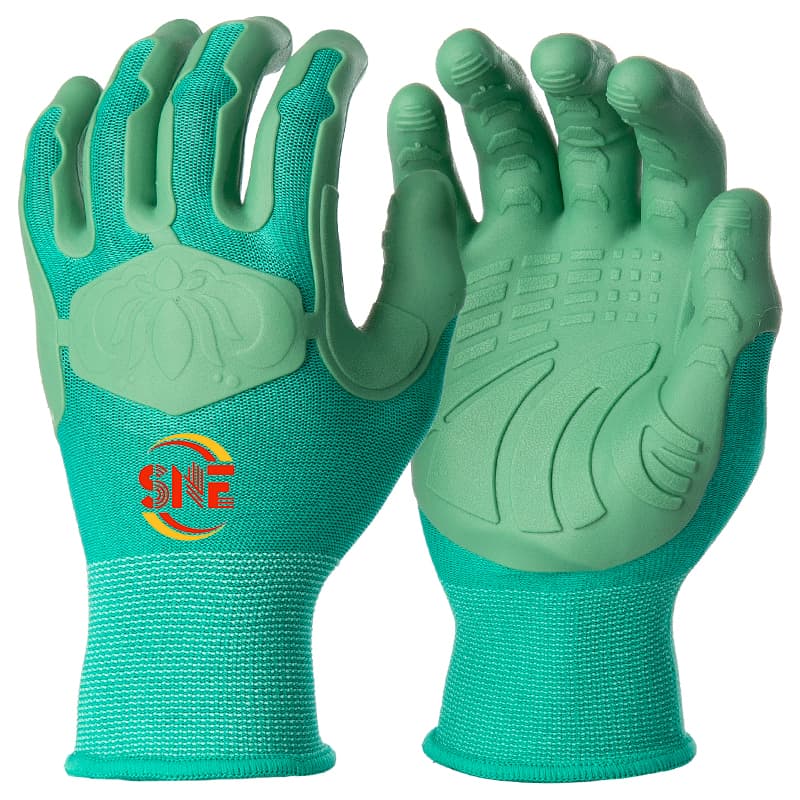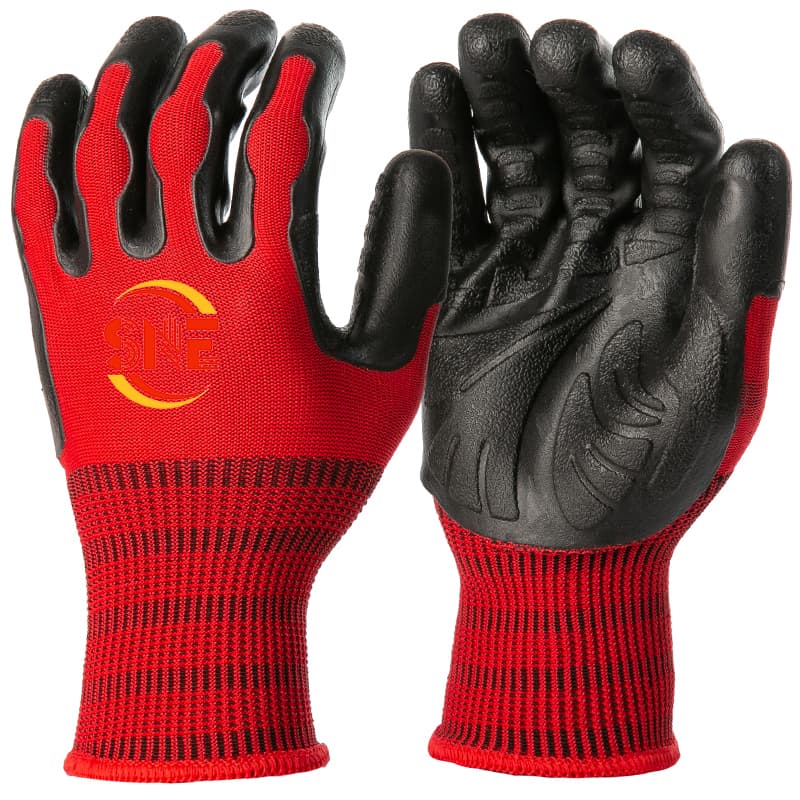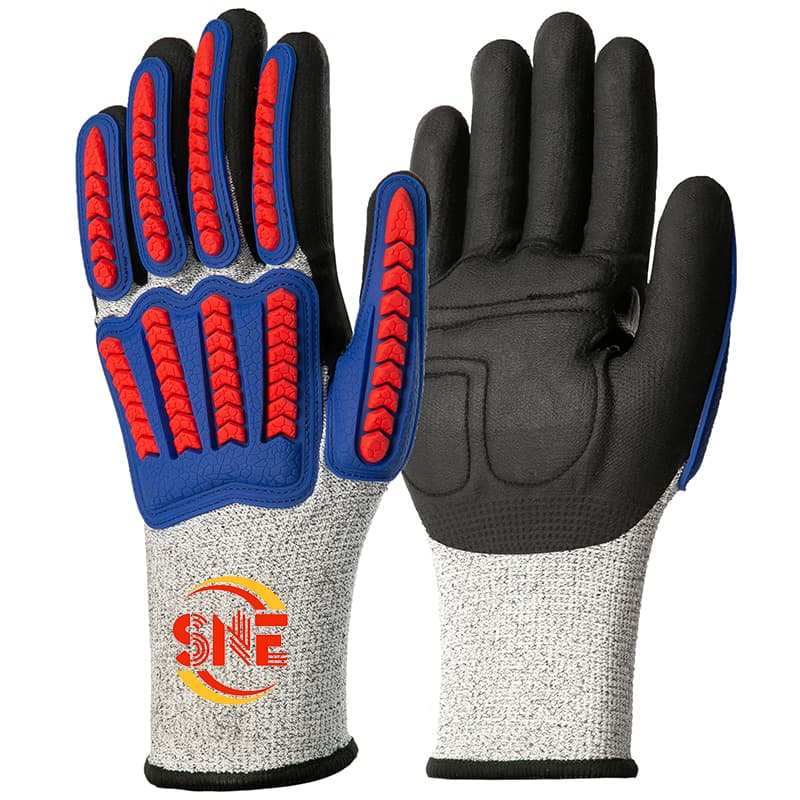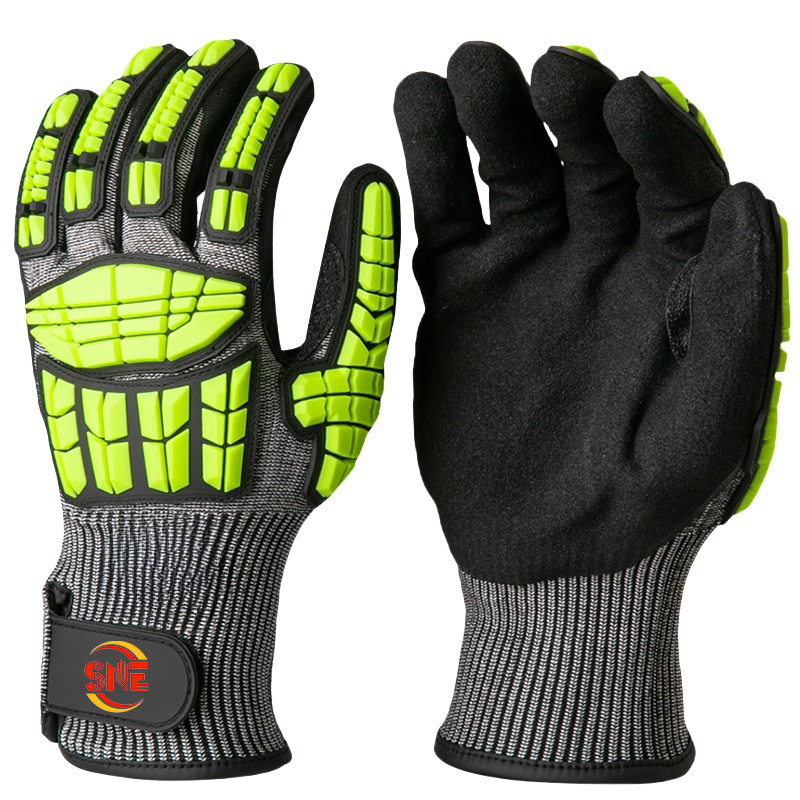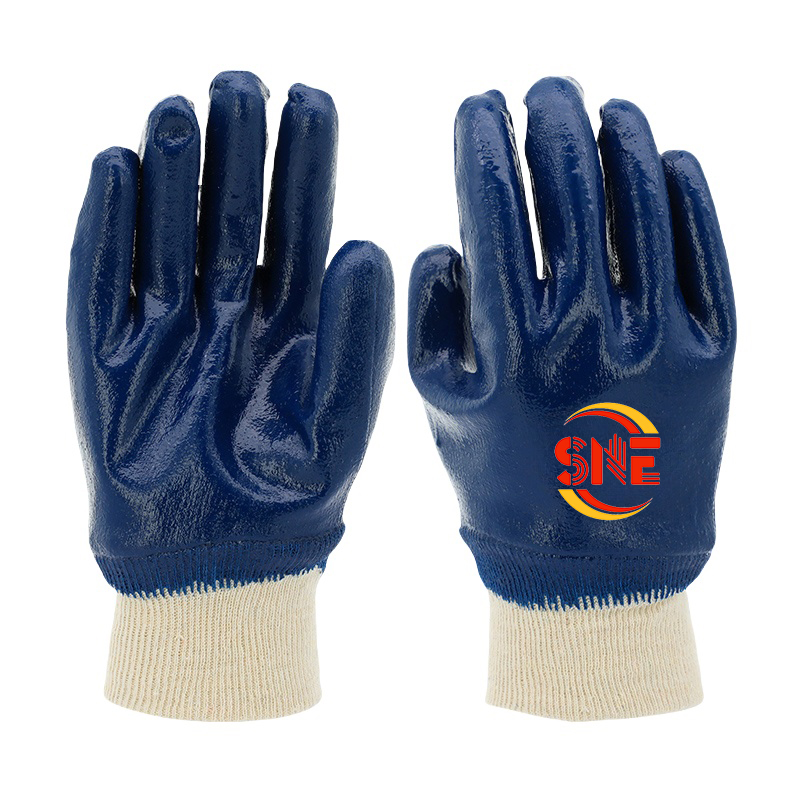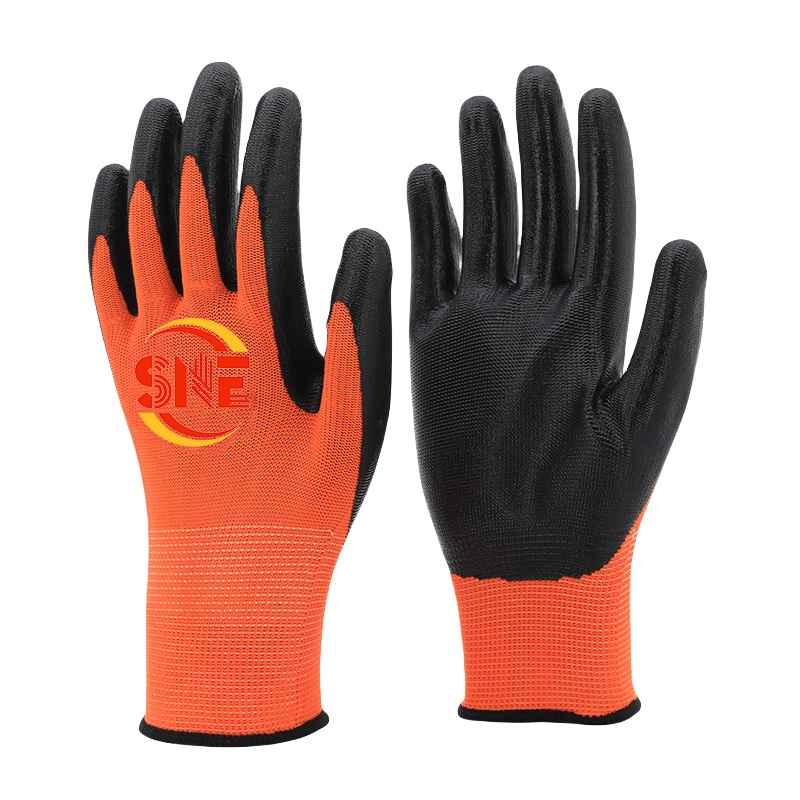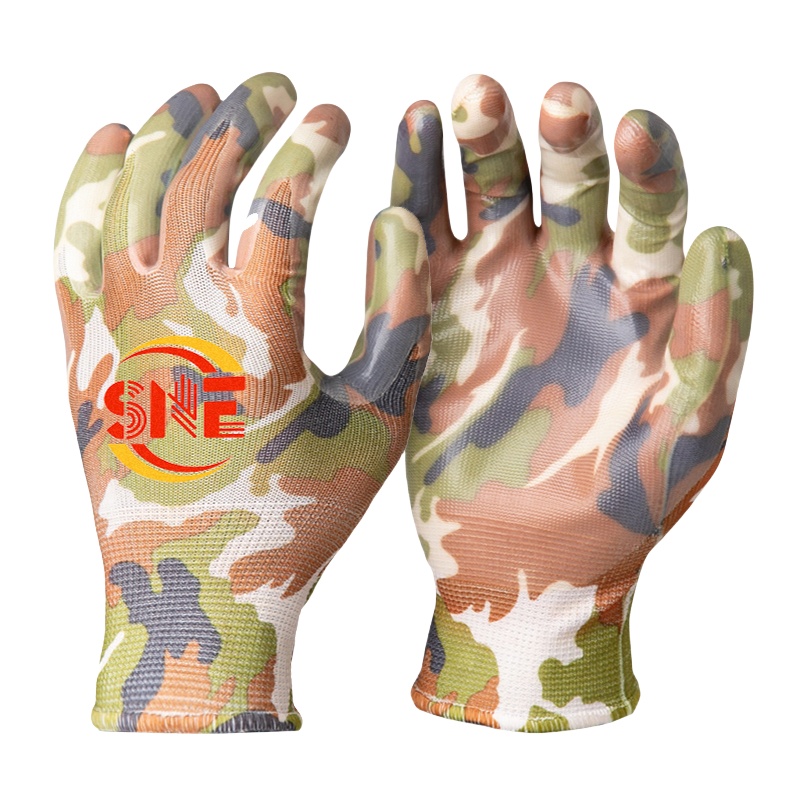Ultimate Guide to Anti-Static Gloves Factory in 2025: Everything You Need to Know
October 21, 2025
Share This Article
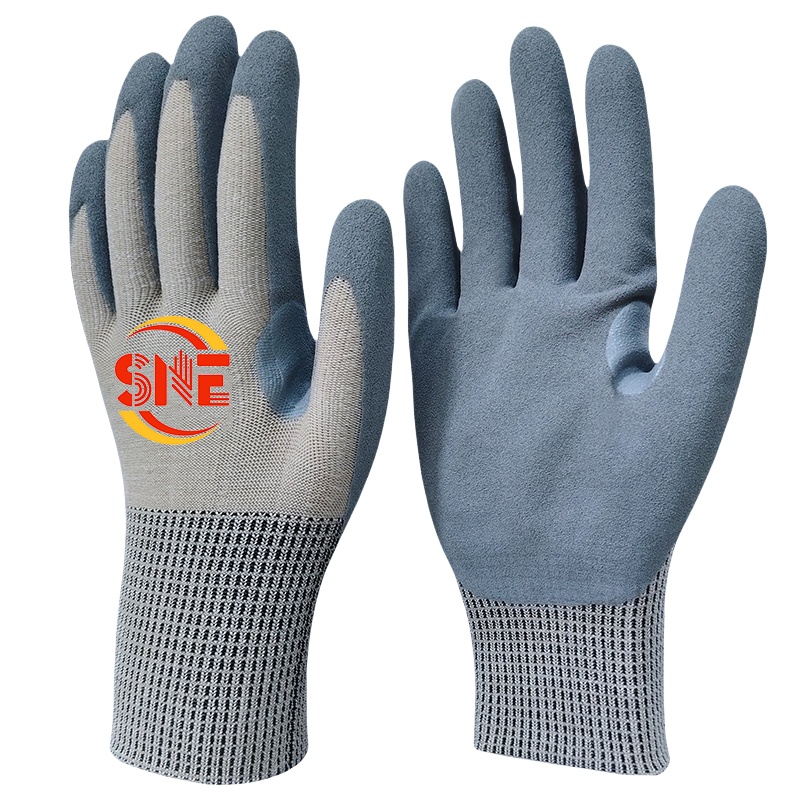
In today’s technology-driven world, where the smallest electrical discharge can cause thousands of dollars in damage to sensitive electronics, anti-static gloves have become an essential protective tool. Whether you’re in electronics manufacturing, semiconductor production, or computer repair, finding a reliable anti-static gloves factory is crucial for your business operations. This comprehensive guide explores everything you need to know about anti-static gloves manufacturing, buying considerations, and how to select the perfect supplier for your needs in 2025.
What Are Anti-Static Gloves?
Anti-static gloves are specialized hand protection designed to prevent the buildup and discharge of static electricity. Unlike regular work gloves, these technologically advanced gloves incorporate conductive materials that safely dissipate static charges that would otherwise damage sensitive electronic components.
The basic principle behind anti-static gloves involves creating a path of controlled resistance that allows static charges to disperse gradually rather than releasing in a sudden, potentially damaging electrostatic discharge (ESD). This is achieved through various materials and manufacturing techniques that balance protection with functionality.
Anti-static gloves typically feature:
- Conductive fibers (often carbon-based) woven throughout the material
- Special coatings that provide static dissipative properties
- Ground connection points for complete ESD protection
- Resistance ratings measured in ohms that indicate their protective capabilities
The importance of these specialized gloves cannot be overstated in environments where even a small static discharge of 100 volts (imperceptible to humans) can permanently damage components that operate on just 5 volts. In industries like semiconductor manufacturing, where a single wafer can be worth tens of thousands of dollars, proper ESD protection through quality anti-static gloves is non-negotiable.
How to Choose the Best Anti-Static Gloves for Your Business?
Selecting the right anti-static gloves requires careful consideration of several factors to ensure they meet your specific requirements. Here’s what to consider when evaluating options from an anti-static gloves factory:
1. Surface Resistivity and Resistance Range
The most critical technical specification for anti-static gloves is their resistance range, typically measured in ohms. For electronics applications:
- Static dissipative gloves: 1×10^6 to 1×10^11 ohms
- Conductive gloves: 1×10^3 to 1×10^5 ohms
Choose based on your specific application requirements. Semiconductor handling generally requires lower resistance ranges than basic electronics assembly.
2. Material Construction and Durability
Anti-static gloves come in various materials, each with distinct advantages:
- Carbon-infused nylon: Lightweight with excellent dexterity
- Polyurethane (PU) coated: Better grip for handling small components
- Nitrile coated: Chemical resistance combined with anti-static properties
- Natural latex: Comfortable with good elasticity and moderate ESD protection
Consider the longevity and durability of the gloves, especially if your operations involve continuous use. Some high-quality anti-static gloves from reputable factories like Qingdao Snell maintain their ESD properties even after multiple washes, representing better value despite potentially higher upfront costs.
3. Comfort and Dexterity Requirements
The best anti-static protection is useless if workers find the gloves uncomfortable and remove them. Consider:
- Breathability for extended wear
- Finger sensitivity for precise component handling
- Fitting options (sized vs. one-size-fits-all)
- Coating thickness and texture
Qingdao Snell’s anti-static gloves are particularly noted for their ergonomic design that maintains dexterity while providing reliable ESD protection, making them popular in precision electronics manufacturing.
4. Certification and Compliance Standards
Legitimate anti-static gloves factories should provide products that meet established standards:
- EN 16350:2014 (European standard for electrostatic properties)
- ANSI/ESD S20.20 (American standard for ESD control programs)
- ISO 9001 certification for quality management systems
Always request test reports and certification documentation before placing orders, especially when dealing with overseas manufacturers.
5. Cost Considerations and Value Proposition
Anti-static gloves represent a spectrum of price points, from basic models to advanced options with enhanced features. When evaluating cost:
- Consider total cost of ownership (including durability/replacement frequency)
- Balance protection needs with budget constraints
- Evaluate bulk pricing options for larger orders
- Compare warranty terms across different factories
While it might be tempting to choose the lowest-priced option, remember that inadequate ESD protection can result in costly product failures that far exceed the savings from cheaper gloves.
Where to Buy Quality Anti-Static Gloves?
Finding reliable sources for anti-static gloves requires knowing where to look and how to evaluate potential suppliers. Here are the primary channels to consider:
Direct from Manufacturers
Purchasing directly from anti-static gloves factories offers several advantages:
- Lower prices without distributor markups
- Customization options for your specific requirements
- Better technical support and product knowledge
- Possibility of factory audits for quality assurance
Many established manufacturers like Qingdao Snell Protective Products Co., Ltd. offer direct purchasing options for business customers, with dedicated export departments handling international inquiries. Their team provides technical guidance on selecting the right anti-static gloves for specific applications, ensuring you get precisely what your operations require.
Industrial Distributors and Wholesalers
For smaller quantity orders or when you need quick delivery:
- Major industrial supply companies (Grainger, Uline, etc.)
- Electronics industry-specific distributors
- Regional safety equipment suppliers
- Online B2B marketplaces with verified sellers
These intermediaries often stock products from multiple anti-static gloves factories, giving you variety but typically at higher price points to cover their markup.
Trade Shows and Industry Exhibitions
Industry events provide excellent opportunities to:
- Meet multiple manufacturers in person
- See and test product samples directly
- Negotiate terms and establish relationships
- Learn about the latest innovations in ESD protection
Major electronics manufacturing shows like Electronica (Germany), APEX Expo (USA), and Electronics Manufacturing Korea often feature numerous anti-static glove manufacturers showcasing their latest products.
Online B2B Platforms
For initial supplier research and comparison:
- Alibaba, Global Sources, and Made-in-China for Asian manufacturers
- ThomasNet for North American suppliers
- European platforms like Europages
- Industry-specific directories for ESD protection equipment
When using these platforms, always verify supplier credentials, request samples before bulk orders, and use secure payment methods with buyer protection.
Anti-Static Gloves Manufacturer in China
China dominates the global production of anti-static gloves, with hundreds of factories specializing in various types and quality levels of ESD protection equipment. Understanding the Chinese manufacturing landscape can help you make better sourcing decisions.
Major Manufacturing Regions
Chinese anti-static gloves production is concentrated in several regions:
- Shandong Province: Home to Qingdao Snell and other established manufacturers with extensive experience in safety gloves production
- Guangdong Province: Features factories often focused on integration with electronics manufacturing
- Jiangsu and Zhejiang: Known for textile expertise with many factories producing knitted anti-static gloves
- Shanghai region: Generally higher-end manufacturers with better quality control systems
Each region has its specialties and advantages, with Shandong manufacturers like Qingdao Snell particularly known for their focus on quality certification and investment in advanced production technology.
Quality Tiers and Price Ranges
Chinese manufacturers typically operate at different quality levels:
- Premium tier: Fully certified factories with in-house testing labs, serving international electronics giants
- Mid-range producers: Balance quality and cost with adequate certifications
- Budget manufacturers: Lower prices but potential inconsistency in ESD protection
At the premium end, Qingdao Snell has established itself with CE and ISO 9001 certifications, rigorous quality control, and consistent ESD performance across production batches. Their anti-static gloves undergo regular testing to ensure resistance values remain within specified ranges, avoiding both the hazards of too much conductivity (shock risks) and too little (inadequate protection).
Typical Manufacturing Capabilities
Leading Chinese anti-static gloves factories typically offer:
- Multiple production lines with high capacity output
- Various coating options (PU, nitrile, latex) on anti-static liner materials
- Customization of packaging, sizing, and branding
- In-house testing facilities for ESD properties verification
- Sample development for custom specifications
Qingdao Snell, with its two manufacturing facilities in Gaomi and Nantong featuring six production lines, exemplifies this high-capacity approach while maintaining quality. Their anti-static gloves production can meet diverse requirements from semiconductor clean rooms to basic electronics assembly environments.
Advantages and Challenges of Chinese Sourcing
Advantages:
- Competitive pricing due to scale economies
- Extensive experience in ESD product manufacturing
- Complete supply chains for all necessary materials
- Flexible customization options
Challenges:
- Quality verification requires diligence
- Communication and time zone differences
- Shipping times for urgent orders
- Intellectual property protection concerns
Many buyers mitigate these challenges by working with established manufacturers like Qingdao Snell that have English-speaking export teams, transparent quality control processes, and experience dealing with international clients and their expectations.
Anti-Static Gloves Manufacturers in the USA
While Chinese manufacturers dominate global volume, US-based anti-static gloves factories serve specific market segments with different value propositions.
Key US Manufacturers and Their Specialties
American anti-static glove production generally focuses on:
- Specialized high-performance applications
- Custom solutions for specific industries
- Rapid delivery for time-sensitive needs
- Advanced materials research and development
Notable American manufacturers include companies specializing in aerospace, defense, and medical electronics applications where the highest reliability standards are required. These producers often work closely with research institutions to develop next-generation ESD protection materials.
Manufacturing Approach and Quality Standards
US-based production typically emphasizes:
- Rigorous quality control and lot traceability
- Adherence to ANSI/ESD standards
- Automated production with less manual handling
- Transparent supply chains and material sourcing
These manufacturers generally produce smaller volumes but with extremely consistent quality parameters, catering to industries where failure is not an option.
Cost Structure and Market Positioning
American-made anti-static gloves generally:
- Command premium prices (often 2-3x imported alternatives)
- Focus on durability and longer service life
- Emphasize total value rather than initial cost
- Provide extensive technical support and application guidance
For certain applications where absolute reliability is crucial, many companies consider this premium justified by the reduced risk of component damage or production interruptions.
Anti-Static Gloves Suppliers in Europe
European suppliers of anti-static gloves bring unique perspectives to ESD protection, often emphasizing sustainable production methods and stringent worker protection standards alongside technical performance.
Key Manufacturing Countries and Their Strengths
The European anti-static gloves landscape features several key producing countries:
- Germany: Known for precision engineering and high-performance technical textiles
- United Kingdom: Specializes in custom solutions for specific industrial applications
- France: Combines fashion-forward design with technical functionality
- Eastern European countries: Offering competitive pricing while maintaining EU standards
European manufacturers typically focus on premium market segments and specialized applications rather than competing directly with Asian mass production on price.
European Quality Standards and Certifications
What sets European suppliers apart is their strict adherence to comprehensive standards:
- EN 16350:2014 specifically for electrostatic properties of protective gloves
- EN 388:2016+A1:2018 for mechanical risks protection
- REACH compliance for chemical safety
- Extensive documentation and traceability requirements
These rigorous standards ensure that anti-static gloves from European factories maintain consistent performance characteristics and safety levels.
Sustainability Focus in European Manufacturing
A distinguishing feature of European anti-static glove production is the emphasis on:
- Reduced environmental footprint in manufacturing processes
- Use of recycled and biodegradable materials where possible
- Ethical labor practices and supply chain transparency
- Extended product lifecycles and recyclability considerations
For businesses with strong environmental, social, and governance (ESG) commitments, European suppliers may align better with corporate sustainability goals, despite potentially higher unit costs.
Comparison of Anti-Static Gloves Manufacturers in Different Countries
When sourcing anti-static gloves, understanding the comparative advantages of manufacturers in different regions can help inform your decision-making process. The following table provides a comprehensive comparison:
| Manufacturing Region | Price Point | Production Volume Capacity | Lead Times | Customization Flexibility | Technical Innovation | Quality Consistency | Certification Standards |
|---|---|---|---|---|---|---|---|
| China (e.g., Qingdao Snell) | Competitive to Low | Very High (3,000-20,000+ MOQ) | 15-30 days | High | Moderate to High | Varies by factory tier | ISO 9001, CE, EN standards |
| USA | Premium | Low to Medium | 7-14 days | Medium to High | Very High | Very High | ANSI/ESD, ISO, proprietary standards |
| Europe | High | Medium | 10-21 days | Medium | High | High | EN 16350, REACH, extensive documentation |
| Southeast Asia | Low to Competitive | High | 20-40 days | Medium | Moderate | Moderate | Varies widely |
| India | Low | Medium to High | 25-45 days | Medium | Moderate | Improving rapidly | International standards with local variations |
As evident from the table, each region offers distinct advantages. Chinese manufacturers like Qingdao Snell excel in high-volume production with competitive pricing, while maintaining respectable quality standards, particularly at the premium tier level. Their extensive production capacity makes them ideal partners for businesses requiring large volumes of anti-static gloves with consistent quality.
US manufacturers, though commanding higher prices, offer advantages in technical innovation and rapid delivery for urgent requirements. European suppliers distinguish themselves through rigorous documentation and sustainability initiatives that appeal to companies with strong ESG commitments.
What to Look for in a Reliable Anti-Static Gloves Factory?
Finding a dependable anti-static gloves supplier requires careful assessment of several key factors beyond just price considerations.
Manufacturing Facilities and Technology
A reliable factory should demonstrate:
- Modern production equipment with process controls
- Clean manufacturing environment appropriate for ESD-sensitive products
- In-house testing facilities for quality verification
- Proper storage areas that protect materials from contamination
During factory assessments or virtual tours, pay attention to the organization of production spaces, cleanliness standards, and whether the manufacturer invests in technology updates. Qingdao Snell’s facilities in Gaomi and Nantong represent the modern approach to anti-static glove manufacturing, with dedicated spaces for different production stages and comprehensive testing stations.
Quality Control Processes
Effective quality assurance for anti-static gloves should include:
- Incoming material inspection for conductive elements
- Regular in-process testing of resistance values
- Batch sampling for performance verification
- Documented procedures for handling non-conforming products
Ask potential suppliers about their quality control protocols specifically for ESD properties, as these critical characteristics require different testing approaches than standard mechanical glove properties.
Research and Development Capabilities
Leading manufacturers invest in ongoing product improvement:
- Material research for better ESD performance
- Ergonomic design enhancements for worker comfort
- Adaptation to emerging industry requirements
- Collaboration with customers on custom solutions
Factories with dedicated R&D departments, like Qingdao Snell, can provide valuable insights into optimizing anti-static protection for your specific applications and help troubleshoot any ESD issues in your production environments.
Communication and Responsiveness
Practical considerations that often determine long-term supplier satisfaction include:
- English-speaking technical staff who understand ESD concepts
- Prompt response to inquiries and technical questions
- Transparent handling of quality issues when they arise
- Willingness to provide detailed product documentation
Test a potential supplier’s communication by asking specific technical questions about their anti-static gloves and evaluating the depth and accuracy of their responses.
Customer References and Market Reputation
Finally, investigate the factory’s track record:
- Request references from current customers in similar industries
- Check for certifications from major electronics manufacturers
- Research online reviews and industry forums for feedback
- Verify the longevity of the company in ESD products manufacturing
Established manufacturers with 10+ years of experience, such as Qingdao Snell Protective Products, typically have refined their processes through multiple product iterations and customer feedback cycles, resulting in more reliable anti-static gloves.
MOQ (Minimum Order Quantity) Considerations When Ordering Anti-Static Gloves
Understanding minimum order requirements is crucial when planning your anti-static gloves procurement strategy, as these requirements vary significantly between manufacturers and can impact both cost structures and inventory management.
Typical MOQ Ranges by Manufacturer Region
MOQ expectations vary by region and factory size:
- Large Chinese factories: 3,000-20,000 pairs (Qingdao Snell typically works within this range)
- Mid-sized Asian manufacturers: 1,000-5,000 pairs
- US/European manufacturers: 500-2,000 pairs
- Distributors/wholesalers: Often as low as 100-500 pairs (at higher unit prices)
These quantities reflect production efficiencies, with larger runs allowing for better pricing through economies of scale.
Strategies for Handling High MOQ Requirements
For businesses facing challenging MOQ thresholds:
- Consolidate orders across departments or business units
- Negotiate staggered delivery schedules with single production runs
- Consider stock programs where manufacturers maintain inventory of your standard items
- Partner with other businesses for combined orders of standard glove styles
- Start with standard products before committing to customized versions
Many manufacturers, including Qingdao Snell, can work with customers to develop appropriate ordering strategies that balance production efficiencies with inventory management concerns.
MOQ Differences for Standard vs. Custom Anti-Static Gloves
Be aware that customization typically increases minimum order requirements:
| Customization Level | Typical MOQ Increase | Lead Time Impact |
|---|---|---|
| Standard catalog products | Base MOQ (3,000-20,000 for Qingdao Snell) | Standard lead time |
| Custom packaging | Minimal increase | +3-5 days |
| Custom colors | +20-30% | +7-10 days |
| Custom sizing proportions | Minimal increase | +2-3 days |
| Custom materials/specifications | +50-100% | +14-21 days |
| Fully custom design | Up to double standard MOQ | +21-30 days |
When evaluating these requirements, balance inventory carrying costs against the benefits of customization for your specific application needs.
How to Customize Anti-Static Gloves with Your Logo and Branding?
Customized anti-static gloves offer multiple benefits beyond just brand visibility, including improved inventory control, theft deterrence, and professional presentation. Here’s how to approach customization effectively.
Available Customization Options
Modern anti-static gloves factories offer several branding approaches:
- Logo printing directly on the gloves (typically on the back of the hand)
- Custom color binding or stitching incorporating company colors
- Specialized packaging with company branding and usage instructions
- Custom tags or wristband labels
- Embossed patterns (for certain material types)
The technical limitations of printing on ESD-safe materials require specialized processes to ensure that customization doesn’t compromise anti-static properties. Experienced manufacturers like Qingdao Snell have developed techniques that maintain consistent ESD protection while accommodating branding requirements.
Design Requirements and File Specifications
For successful customization, prepare design files according to manufacturer specifications:
- Vector formats (AI, EPS, PDF) for logo printing
- Pantone color codes for accurate color matching
- Size specifications that consider the printable area on gloves
- Design placement guidelines to avoid wear areas
Work closely with your chosen factory’s design team to adapt your branding to the constraints of anti-static materials while maintaining brand recognition.
Customization Costs and MOQ Implications
Custom branding affects both costs and minimum quantities:
- Simple one-color logo printing: Typically adds $0.10-0.30 per pair
- Multi-color printing: $0.30-0.50 per pair
- Custom packaging: $0.20-0.40 per pair
- Setup/tooling fees: $50-300 depending on complexity
MOQs for customized anti-static gloves generally start at 3,000-5,000 pairs for basic customization, with more extensive customization potentially requiring 10,000+ pairs to be economically viable.
Qingdao Snell offers flexible customization options with MOQs starting at 3,000 pairs for standard customizations, making branded anti-static gloves accessible to mid-sized electronics manufacturers and assembly operations.
What Are the Most Durable Materials for Anti-Static Gloves?
The durability of anti-static gloves directly impacts both protection reliability and total cost of ownership. Understanding material characteristics helps in selecting gloves that provide the optimal balance between static protection, longevity, and functionality.
Comparison of Base Materials for Longevity
The foundation of anti-static gloves significantly affects their durability:
| Base Material | Durability Rating | ESD Protection Stability | Washing Resistance | Cost Factor | Best Applications |
|---|---|---|---|---|---|
| Carbon-infused nylon | Moderate to High | Excellent | Good (maintains properties through 20+ washes) | Medium | Precision electronics, semiconductors |
| Polyester with carbon filament | High | Very good | Excellent (30+ washes) | Medium-High | General electronics assembly |
| Copper-infused fibers | Very High | Excellent | Very good | High | Critical components, aerospace |
| Carbon-embedded natural fibers | Moderate | Good | Moderate (10-15 washes) | Low-Medium | Light-duty electronics handling |
| Synthetic rubber with conductive additives | High | Very good | Limited washing | Medium | Areas with chemical exposure |
Qingdao Snell specializes in carbon-infused nylon and polyester with carbon filament constructions, offering the best balance of durability, wash resistance, and consistent ESD protection for most electronics manufacturing applications.
Coating Technologies and Their Impact on Glove Lifespan
The coating applied to anti-static base materials significantly affects both grip functionality and durability:
- Polyurethane (PU): Offers excellent abrasion resistance and dexterity, maintaining flexibility through multiple uses
- Nitrile: Provides superior chemical resistance and durability in harsh environments
- Latex: Delivers excellent elasticity and comfort but typically less durable than synthetic coatings
- Silicone-free formulations: Specialized for sensitive electronics where silicone contamination is problematic
Advanced coating technologies utilized by leading manufacturers like Qingdao Snell often incorporate wear indicators that change color as the conductive properties diminish, signaling when replacement is necessary to maintain proper ESD protection.
Environmental Factors Affecting Durability
Consider how your specific working environment affects anti-static glove performance over time:
- Humidity levels: Extreme dryness can accelerate degradation of some conductive materials
- Temperature fluctuations: Can affect polymer stability in certain formulations
- Chemical exposure: Even minimal solvent contact can compromise some anti-static treatments
- Abrasive materials: Sharp edges on components accelerate wear patterns
For environments with specific challenges, consult with technical specialists at factories like Qingdao Snell who can recommend appropriate material combinations for maximum durability under your specific operating conditions.

